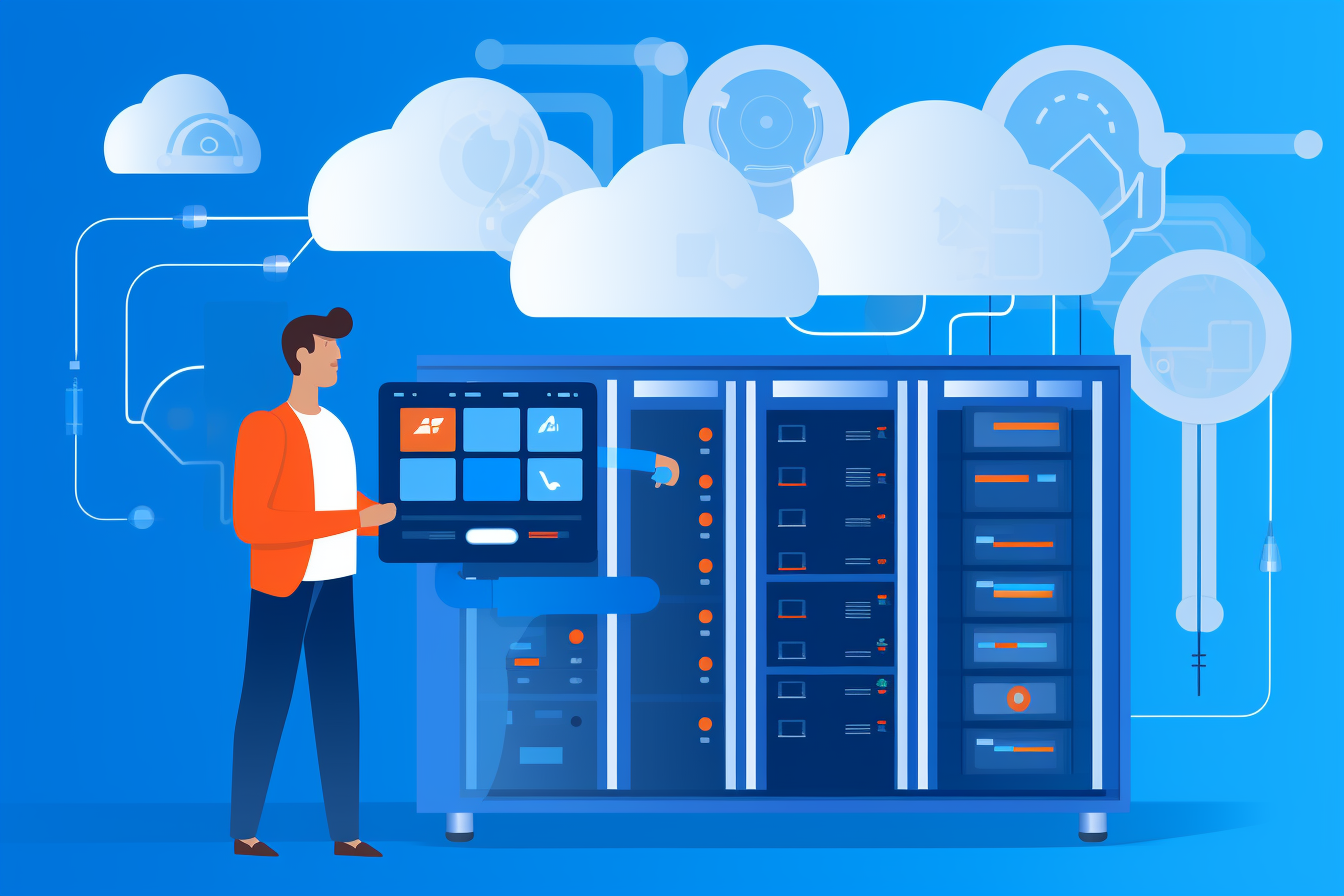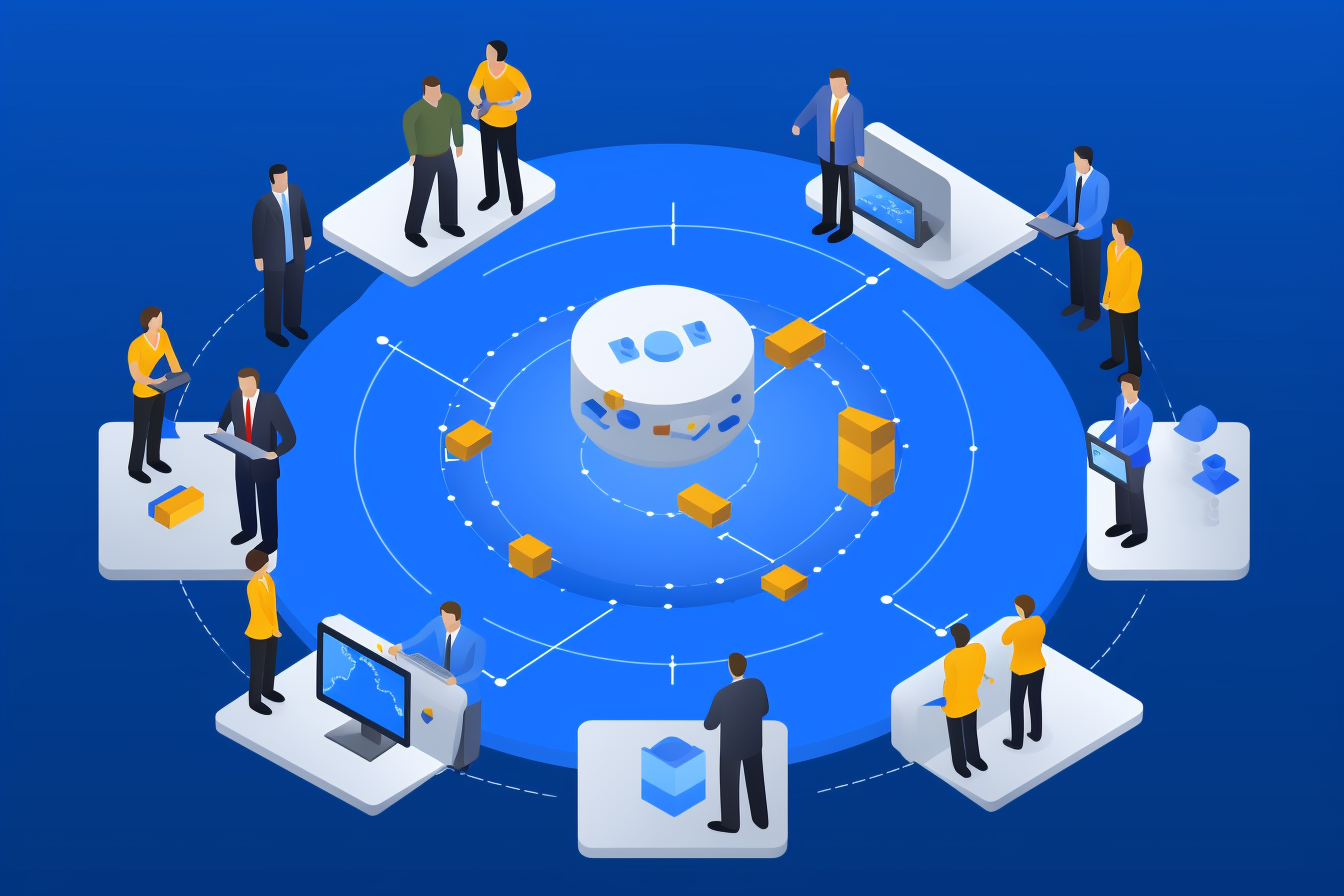-
Harnessing Azure Monitor: Gain Real-time Insights and Optimize Your Azure Environment
In the dynamic world of Azure cloud computing, organizations seek efficient ways to monitor and optimize their Azure resources. Azure Monitor offers a comprehensive set of monitoring and diagnostic tools that enable organizations to gain real-time insights, detect and resolve issues proactively, and optimize their Azure deployments. In this blog post, we will explore the…
-
Ensuring Continuity with Azure Service Health: Your Window into Azure Service Status
In today’s highly interconnected digital landscape, organizations rely on uninterrupted access to cloud services for their critical operations. Azure Service Health serves as a vital resource, providing real-time insights and updates about Azure service status, planned maintenance, and incidents. In this blog post, we will explore the purpose of Azure Service Health, its key features,…
-
Unleashing the Power of Azure Advisor: Maximizing Your Azure Deployments
In the fast-paced world of Azure cloud computing, organizations are constantly seeking ways to optimize their Azure deployments, enhance performance, fortify security, and streamline costs. Azure Advisor is an invaluable companion in this endeavor, offering tailored recommendations and best practices to unlock the full potential of your Azure environment. In this blog post, we will…
-
Simplify Azure Resource Management: Exploring Azure Resource Manager (ARM) and ARM Templates
Azure Resource Manager (ARM) is a powerful management layer in Azure that enables organizations to deploy, manage, and organize Azure resources efficiently. At the core of ARM’s capabilities are ARM templates, which provide a declarative and repeatable approach for defining and deploying Azure resources. In this blog post, we will delve into the purpose of…
-
Empowering Cloud Deployments: Unveiling the Power of Infrastructure as Code (IaC) in Azure
In the realm of cloud computing, Infrastructure as Code (IaC) has emerged as a transformative practice that enables organizations to provision, manage, and scale their infrastructure using code-based configurations. Azure provides robust tools and services that facilitate the implementation of IaC, streamlining the deployment and management of resources. In this blog post, we will explore…
-
Unleashing Hybrid Cloud Potential: Understanding the Purpose of Azure Arc
As organizations embrace the benefits of the cloud, they often find themselves in a hybrid environment, with resources spread across on-premises, multi-cloud, and edge locations. Azure Arc provides a powerful solution for managing and orchestrating resources beyond Azure’s boundaries. With Azure Arc, organizations can extend Azure services, governance, and management capabilities to any infrastructure, regardless…
-
Empower Your Azure Management: Unleashing the Power of Azure Cloud Shell with Azure CLI and PowerShell
In the ever-evolving world of Azure cloud computing, efficient and streamlined management is key to success. Azure Cloud Shell provides a powerful and interactive environment that allows users to manage their Azure resources directly from a browser. With built-in Azure Command-Line Interface (CLI) and Azure PowerShell, Azure Cloud Shell offers a flexible and convenient experience…
-
Navigating the Azure Portal: A Gateway to Azure’s Power and Potential
Aspiring Azure professionals embarking on their cloud journey must familiarize themselves with the Azure Portal, the central hub for managing and interacting with Azure resources. The Azure Portal offers a rich and intuitive user interface that enables users to deploy, monitor, and manage their Azure services effectively. In this blog post, we will explore the…
-
Ensuring Stability and Protection: Understanding the Purpose of Resource Locks in Azure
In the dynamic and collaborative environment of Azure, it is essential to ensure stability and protect critical resources from unintended modifications or deletions. Azure provides a powerful feature called resource locks, which enable organizations to prevent accidental or unauthorized changes to their Azure resources. In this blog post, we will explore the purpose of resource…
-
Ensuring Governance and Compliance: Exploring the Purpose of Azure Policy
In the rapidly evolving cloud landscape, organizations face the challenge of maintaining governance, compliance, and security across their Azure environments. Azure Policy provides a powerful framework for defining and enforcing governance rules to ensure the adherence of resources to organizational standards and regulatory requirements. In this blog post, we will delve into the purpose of…
-
Understanding Virtualization Fundamentals: Server Virtualization, Containers, and VRFs
Virtualization has revolutionized the world of IT by allowing efficient utilization of resources, increased flexibility, and simplified management. In this blog post, we will explore the core concepts of virtualization, focusing on three essential aspects: server virtualization, containers, and VRFs (Virtual Routing and Forwarding). By understanding these virtualization fundamentals, network administrators and IT professionals can…
-
Unlocking Data Insights: Exploring the Power of Microsoft Purview in Azure
In today’s data-driven world, organizations face the challenge of managing and deriving value from vast amounts of data dispersed across various sources. Microsoft Purview, a powerful data governance solution in Azure, helps organizations discover, understand, and govern their data assets. In this blog post, we will explore the purpose of Microsoft Purview in Azure, its…
-
Organizing and Managing Azure Resources: Unlocking the Power of Tags
In the dynamic world of Azure cloud computing, effectively organizing and managing resources is crucial for efficient operations and cost control. Azure provides a powerful feature called tags, which allows organizations to categorize and label resources with customizable metadata. In this blog post, we will explore the purpose of tags in Azure, their benefits, and…
-
Mastering Cost Management: Maximizing Efficiency with Azure’s Cost Management Capabilities
As organizations embrace the cloud, effectively managing costs becomes a crucial aspect of their Azure journey. Azure provides robust cost management capabilities that empower organizations to monitor, optimize, and control their spending. In this blog post, we will explore Azure’s cost management capabilities, including cost tracking, budgeting, optimization tools, and reporting features. Understanding these capabilities…
-
Choosing the Right Azure Cost Estimation Tool: Azure Pricing Calculator vs. TCO Calculator
As organizations plan their cloud migration or expansion strategies, understanding the potential costs associated with Azure services becomes essential. Microsoft offers two valuable tools for estimating costs: the Azure Pricing Calculator and the Total Cost of Ownership (TCO) Calculator. In this blog post, we will compare these tools, explore their features, and help you determine…
-
Understanding Azure Cost Factors: Optimizing Your Azure Investment
As organizations embrace the power of Azure for their cloud infrastructure and services, it becomes essential to manage and optimize costs effectively. Azure offers a range of services and resources with varying cost structures, making it crucial to understand the factors that can impact costs. In this blog post, we will explore the key factors…
-
Strengthening Cloud Security with Microsoft Defender for Cloud
As organizations increasingly migrate their workloads to the cloud, protecting critical assets and defending against sophisticated threats becomes paramount. Microsoft Defender for Cloud (formerly Azure Defender) is a comprehensive security solution that helps organizations fortify their cloud environments. In this blog post, we will explore the purpose of Microsoft Defender for Cloud, its key features,…
-
Strengthening Security with Defense-in-Depth in Azure: Protecting Your Digital Assets
In today’s digital landscape, organizations face an ever-evolving array of sophisticated cyber threats. To ensure robust protection of sensitive data and resources, a comprehensive security strategy is essential. Azure offers a defense-in-depth approach, a layered security model that fortifies the Azure ecosystem against diverse threats. In this blog post, we will explore the purpose of…
-
Embracing Zero Trust in Azure: Reinforcing Security in a Dynamic World
As the threat landscape evolves and the perimeter-based security approach becomes less effective, a paradigm shift towards a Zero Trust security model is gaining traction. Azure provides a comprehensive set of capabilities to implement the Zero Trust framework, enabling organizations to strengthen their security posture and protect critical assets. In this blog post, we will…
-
Simplifying Access Management with Azure Role-Based Access Control (RBAC)
In complex cloud environments, managing access to resources and ensuring proper permissions can be a challenging task. Azure provides a robust access management framework called Role-Based Access Control (RBAC) to simplify the process of granting permissions and enforcing security in Azure services. In this blog post, we will explore Azure RBAC, its key components, benefits,…
-
Strengthening Security with Conditional Access in Azure Active Directory
In today’s rapidly evolving threat landscape, securing access to resources and protecting sensitive data is of paramount importance. Azure Active Directory (Azure AD) offers a powerful feature called Conditional Access, which enables organizations to enforce fine-grained access controls based on various conditions. In this blog post, we will explore Conditional Access in Azure AD, its…
-
Simplifying External Identity Management in Azure: Exploring B2B and B2C Identities
In today’s interconnected world, businesses often need to extend access to their resources to external users, including partners, customers, and vendors. Azure provides robust identity management capabilities to streamline the process of managing external identities. In this blog post, we will explore external identities in Azure, focusing on Business-to-Business (B2B) and Business-to-Customer (B2C) scenarios. Understanding…
-
Streamlining Authentication in Azure: Exploring Single Sign-On, Multi-Factor Authentication, and Passwordless Options
Authentication is a fundamental aspect of securing access to resources in the cloud. Azure offers a range of authentication methods to provide a secure and streamlined user experience. In this blog post, we will explore authentication methods in Azure, including Single Sign-On (SSO), Multi-Factor Authentication (MFA), and Passwordless authentication. Understanding these methods will help businesses…
-
Simplifying Identity and Access Management with Azure Directory Services
In today’s cloud-driven world, effective identity and access management is crucial for businesses to secure their resources and enable seamless user experiences. Azure provides a suite of directory services to simplify identity management, including Azure Active Directory (Azure AD) and Azure Active Directory Domain Services (Azure AD DS). In this blog post, we will explore…
-
Simplifying Data Migration: Exploring Azure Migrate and Azure Data Box
As organizations embrace the cloud, the need to migrate data and workloads efficiently becomes paramount. Microsoft Azure offers a variety of migration options to streamline the process of moving data to the cloud. In this blog post, we will explore two popular migration options: Azure Migrate and Azure Data Box. By understanding the features, benefits,…
-
Seamlessly Moving Files in Azure: Exploring AzCopy, Azure Storage Explorer, and Azure File Sync
As organizations embrace the cloud, the need to efficiently move files and data between different storage solutions becomes crucial. Microsoft Azure provides a variety of tools and services to facilitate seamless file migration and management. In this blog post, we will explore popular options for moving files in Azure, including AzCopy, Azure Storage Explorer, and…
-
Navigating Azure Storage Account Options and Storage Types: Choosing the Right Fit for Your Data
Azure Storage is a comprehensive storage solution offered by Microsoft Azure, providing a scalable and durable platform to store and manage data. Within Azure Storage, there are different storage account options and storage types available, each designed to cater to specific data storage needs. In this blog post, we will delve into Azure storage account…
-
Demystifying Azure Redundancy Options: Ensuring High Availability and Data Durability
High availability and data durability are essential considerations when architecting a robust cloud infrastructure. Azure offers a variety of redundancy options, including Availability Zones, Availability Sets, Geo-Redundant Storage (GRS), Locally Redundant Storage (LRS), Zone-Redundant Storage (ZRS), and more. In this blog post, we will explore Azure redundancy options in-depth, providing insights into their features, benefits,…
-
Exploring Azure Storage Tiers: Choosing the Right Storage Performance and Cost Balance
Azure Storage provides a range of storage tiers designed to offer optimal performance and cost-efficiency for different data storage requirements. Understanding the different storage tiers and their characteristics is essential for businesses to make informed decisions about storing their data in Azure. In this blog post, we will explore the storage tiers in Azure, including…
-
Exploring Azure Storage Services: A Comprehensive Comparison
Azure provides a suite of storage services designed to meet the diverse needs of businesses in the realm of cloud storage. Understanding the differences and capabilities of these services is crucial for selecting the right storage solution that aligns with specific requirements. In this blog post, we will compare Azure Storage services, including Azure Blob…
-
Demystifying Public and Private Endpoints in Azure: Enhancing Network Connectivity and Security
In the world of cloud computing, establishing secure and reliable network connectivity is of paramount importance. Microsoft Azure offers two key features, public and private endpoints, that play a crucial role in facilitating network connectivity while maintaining robust security measures. In this blog post, we will define and explore the concepts of public and private…
-
Navigating the World of Virtual Networking in Azure: Azure Virtual Networks, Subnets, Peering, Azure DNS, VPN Gateway, and ExpressRoute
Virtual networking forms the backbone of modern cloud infrastructure, enabling businesses to securely connect and communicate between resources in the cloud. In Microsoft Azure, virtual networking provides a robust framework for building and managing network architectures. In this blog post, we will explore virtual networking in Azure, diving into Azure Virtual Networks, Subnets, Peering, Azure…
-
Exploring Application Hosting Options in Azure: Web Apps, Containers, and Virtual Machines
Application hosting is a critical aspect of modern cloud computing, providing businesses with the ability to deploy and manage their applications in a flexible and scalable manner. Microsoft Azure offers a range of hosting options, including web apps, containers, and virtual machines, to cater to diverse application requirements. In this blog post, we will explore…
-
Demystifying Resource Requirements for Virtual Machines in Azure
Virtual machines (VMs) serve as the backbone of modern cloud infrastructure, providing businesses with the flexibility and scalability to run their applications and workloads. Understanding the resources required for virtual machines in Azure is essential for optimizing performance, ensuring efficient resource allocation, and achieving cost-effectiveness. In this blog post, we will delve into the key…
-
Exploring Virtual Machine Options in Azure: Azure VMs, Virtual Machine Scale Sets, Availability Sets, and Azure Virtual Desktop
Virtual machines (VMs) play a critical role in modern cloud computing, offering businesses the flexibility and scalability to deploy and manage applications and workloads. In the Azure ecosystem, several virtual machine options are available to cater to diverse needs. In this blog post, we will explore Azure virtual machines, Azure Virtual Machine Scale Sets, availability…
-
Choosing the Right Compute Type in Azure: A Comparison of Containers, Virtual Machines, and Functions
Microsoft Azure offers a range of compute options to meet the diverse needs of businesses and developers. Choosing the right compute type is crucial for optimizing performance, scalability, and cost-effectiveness. In this blog post, we will compare three popular compute options in Azure: containers, virtual machines, and functions. By understanding the characteristics, use cases, and…
-
Navigating Azure’s Hierarchy: Resource Groups, Subscriptions, and Management Groups
Microsoft Azure provides a comprehensive cloud platform that allows businesses to leverage a wide range of services and resources. To effectively manage and organize these resources, Azure employs a hierarchical structure consisting of resource groups, subscriptions, and management groups. In this blog post, we will explore the hierarchy of resource groups, subscriptions, and management groups…
-
Simplify Azure Governance and Management with Azure Management Groups
Managing resources effectively in the cloud is essential for organizations to maintain control, compliance, and efficiency. In the Microsoft Azure ecosystem, Azure Management Groups play a crucial role in simplifying governance and streamlining resource management. In this blog post, we will explore Azure Management Groups, their significance, and how they empower businesses to organize and…
-
Azure Subscriptions: Empowering Cloud Journey with Flexible and Scalable Access
Azure subscriptions play a pivotal role in Microsoft Azure’s cloud platform, providing organizations with access to a rich set of services and resources. In this blog post, we will explore Azure subscriptions and their significance, highlighting their role in enabling businesses to leverage the power of Azure for their unique needs. By understanding Azure subscriptions,…
-
Unleashing the Power of Azure Resources and Resource Groups: Simplifying Cloud Management
Microsoft Azure offers a vast array of resources and services that empower businesses to build, deploy, and manage applications and infrastructure in the cloud. In this blog post, we will explore Azure resources and resource groups, fundamental concepts that streamline cloud management and provide organizational structure within the Azure platform. By understanding Azure resources and…
-
Exploring Azure Datacenters: The Backbone of Microsoft Azure
Azure datacenters serve as the foundation of Microsoft Azure’s global cloud infrastructure, supporting the delivery of reliable and scalable services to businesses and organizations worldwide. In this blog post, we will delve into the world of Azure datacenters, their significance, and the key elements that make them the backbone of the Azure platform. By understanding…
-
Achieving Resilience and High Availability with Azure Availability Zones
Ensuring high availability and resilience of applications and services is critical in today’s digital landscape. Microsoft Azure offers a robust solution with Azure Availability Zones. In this blog post, we will explore Azure Availability Zones, their significance, and how they contribute to building fault-tolerant and highly available cloud infrastructures. By understanding Azure Availability Zones, businesses…
-
Azure Regions, Region Pairs, and Sovereign Regions: Understanding the Microsoft Azure Global Infrastructure
Microsoft Azure, a leading cloud computing platform, operates a vast global infrastructure to provide services to businesses and organizations worldwide. In this blog post, we will explore the concept of Azure regions, region pairs, and sovereign regions. By understanding these key elements of the Azure global infrastructure, businesses can make informed decisions and leverage the…
-
Navigating Shared Responsibility in Cloud Computing: Understanding Roles and Responsibilities
Cloud computing has revolutionized the way businesses operate, offering a wide range of services to meet diverse needs. When it comes to cloud adoption, understanding the concept of shared responsibility is crucial. In this blog post, we will explore the shared responsibility model in cloud computing, focusing on Infrastructure as a Service (IaaS), Platform as…
-
Demystifying Cloud Service Types: Understanding IaaS, PaaS, and SaaS
Cloud computing offers a variety of service types to cater to diverse business needs. In this blog post, we will explore three fundamental cloud service types: Infrastructure as a Service (IaaS), Platform as a Service (PaaS), and Software as a Service (SaaS). We will delve into their definitions, functionalities, and suitable use cases. By understanding…
-
Mastering Cloud Computing: Exploring Models, Shared Responsibility, and Pricing
In today’s tech-driven world, cloud computing has taken center stage, revolutionizing how we harness technology resources. In this blog post, we’ll dive into the core aspects of cloud computing, including its definition, the shared responsibility model, various cloud models (public, private, and hybrid), suitable use cases, pricing models, and the fascinating concept of serverless computing.…
-
Unleashing the Power of Cloud Services: Exploring the Benefits
Cloud services have emerged as a game-changer in the world of technology, offering a wide range of benefits to businesses of all sizes. In this blog post, we’ll delve into the advantages of leveraging cloud services, including high availability and scalability, reliability and predictability, security and governance, and enhanced manageability. By harnessing these benefits, organizations…














































